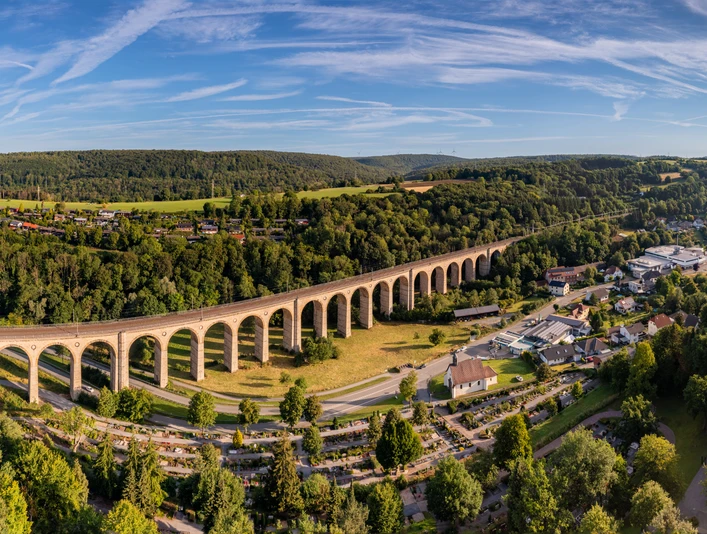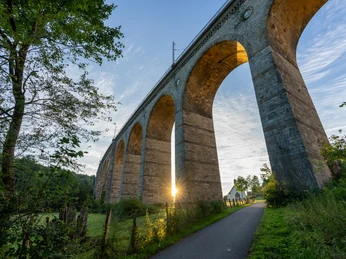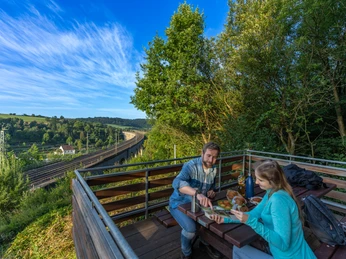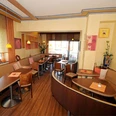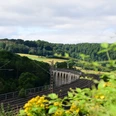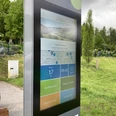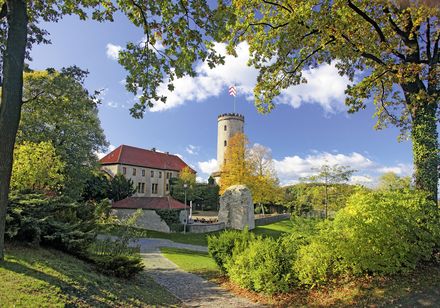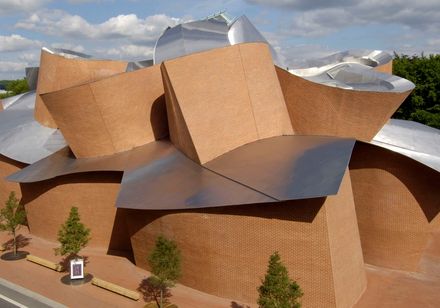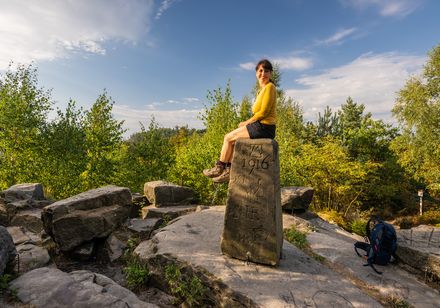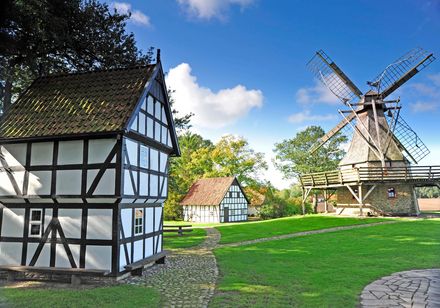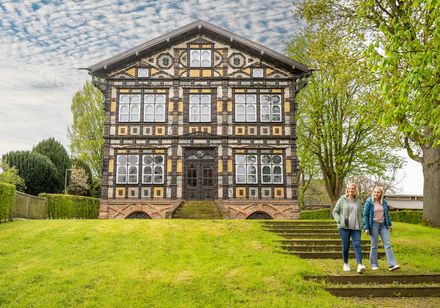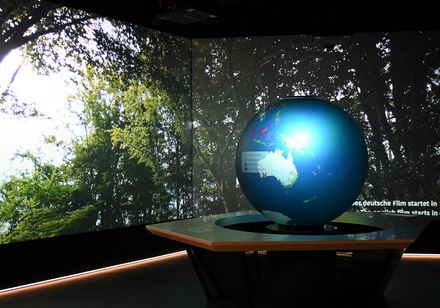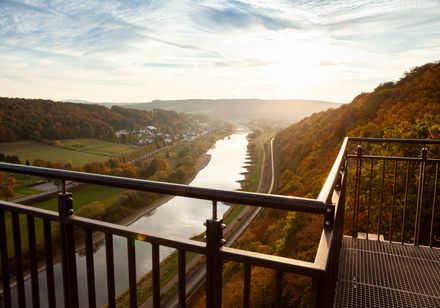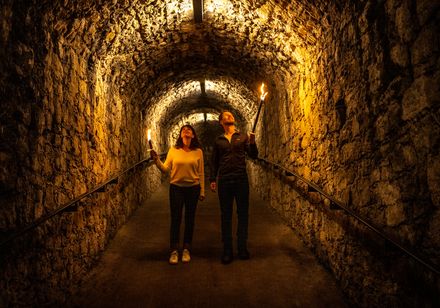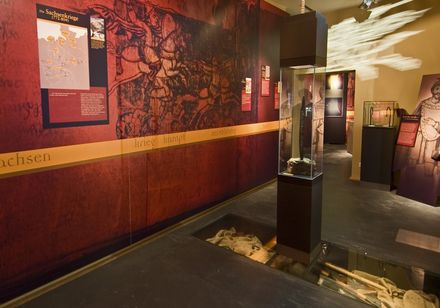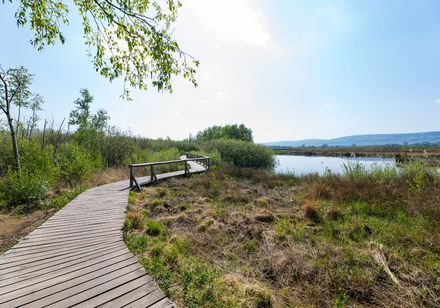When you go on a journey, you can experience something. This saying hits the nail on the head here. Coming from Paderborn, the train crosses a bridge, but not just any bridge. It is the largest sand-lime brick bridge in Europe - the mighty Bekeviaduct. Altenbeken has been known as an important rail junction for a century and a half. Since its opening in 1853, its landmark has been the railroad viaduct, which spans the Beke valley in 24 daring arches, 482 m long and 35 m high.
The "Gateway to the Egge" offers visitors a view of our idyllic but by no means dreamy town in the middle of the Teutoburg Forest / Eggegebirge Nature Park. Nestled in one of the most beautiful low mountain ranges in Germany, it offers residents and guests nature in its purest and best form.
"I thought I would find a golden bridge because so many thalers have been spent!", Prussian King Friedrich Wilhelm IV is said to have remarked at the opening. This royal saying is said to have contributed to the fact that a golden viaduct was later included in Altenbeken's coat of arms as a landmark.
During the Second World War, the viaduct was hit by heavy bombs, destroying four pillars and several arches. The extensive construction work was completed at the beginning of October 1950, and since then the viaduct has once again adorned the landscape with its beautiful shape.
As a "golden bridge" in the truest sense of the word, the Altenbeken railroad viaduct has been making a name for itself since December 2002. 20 of the 24 arches are illuminated in the dark. In addition to countless photo enthusiasts, television camera crews also like to use this impressive backdrop.
Nearby
